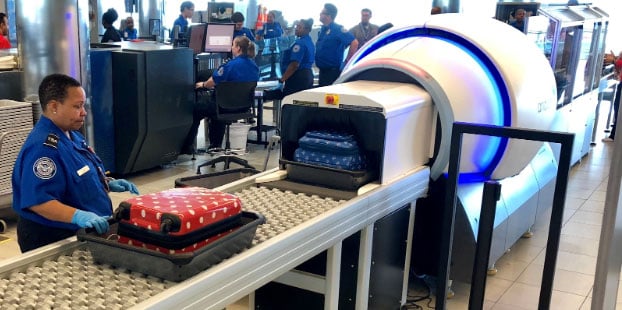Safeguarding Your Film on the Go: How to Travel with Film and Avoid X-Ray DamageUpdated 2 years ago
Globetrotters with a love for film, we have got you covered! As you venture across the world, armed with your camera and precious film, it's important to be aware of the potential threats to your unprocessed film, namely, x-ray damage. Here's your guide on how to travel with film and ensure it remains safe from harm.
1. Never Put Unprocessed Film in Checked Luggage
First things first, your unprocessed film should never make its way into your checked luggage. The equipment used to screen checked luggage emits high-intensity x-rays, potent enough to ruin all film, whether exposed or not. Instead, your film should find a safe spot in your carry-on bag, which undergoes a less intense x-ray screening.
2. Carry-On X-ray Screening and ISO
The TSA (Transportation Security Administration) in the United States states that film under 800 ISO can pass through carry-on x-ray machines without incurring damage. Nonetheless, being extra careful won't hurt. Pack your film in a clear plastic bag, remove it from your carry-on bag at the security checkpoint, and request a hand-search for your film. Do remember, this might not be possible at all international airports, as regulations and inspections vary.
3. Lead-Lined Bags: No Longer Recommended
Lead-lined bags, once used for protecting film from radiation, are no longer advised. The inability of x-ray operators to see items within the bag might prompt them to increase the power of the x-ray machine, rendering the bag's protection moot.
 New CT scanners
New CT scanners
4. The Emergence of CT Scanners: A Global Trend
As of June 2023, CT (computed tomography) scanners, typically used for checked luggage, have been gradually integrated into carry-on bag screenings in the United States. The TSA has spearheaded this trend, with over 1,600 CT machines already installed across approximately 230 locations.
The adoption of such advanced screening technology in the U.S. serves as a valuable indicator for what we might expect to see in airport security globally, including here in Australia. Given the widespread influence of U.S. security practices, we might anticipate a similar transition to more powerful scanners around the world.
These machines, however, pose a potential risk to your unprocessed film due to their more intense x-ray radiation. Therefore, regardless of where you are traveling, it's prudent to always request a hand-inspection at the airport security checkpoint to safeguard your film. As we navigate this era of advancing technology, protecting our film becomes ever more crucial.
5. Be Diligent and Respectful
Whenever possible, arrive at the security checkpoint with ample time to spare. Being in a rush or adding to a long queue can create stress for security personnel. When you make their job easier by being patient and understanding, they are more likely to be accommodating.
6. Stay Informed
The technology and rules surrounding airport security and x-ray machines are ever-changing. To stay up-to-date and read publications from reliable sources such as Kodak’s Technical Information Bulletin and Fujifilm’s Support and Contact Center.
Safe travels and happy shooting! Remember, your precious film is worth that extra step at the security checkpoint.